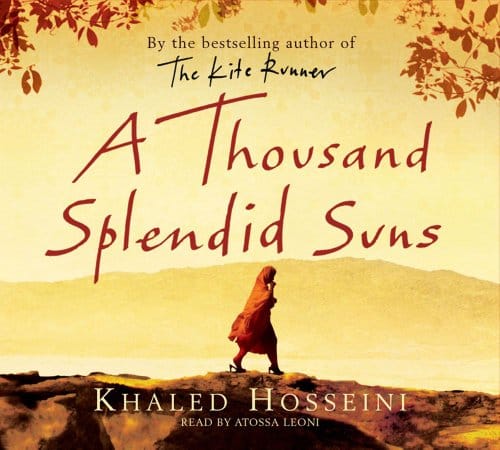A Deep Dive into Khaled Hosseini’s “A Thousand Splendid Suns”
Explore plot, themes, characters and cultural impact of Khaled Hosseini’s A Thousand Splendid Suns in this concise, spoiler-light 800-word guide.

Introduction
Khaled Hosseini’s second novel, A Thousand Splendid Suns, has captivated millions of readers since its 2007 release, offering a poignant portrait of friendship, sacrifice, and resilience in war-torn Afghanistan. While the book shares the lyrical storytelling that made The Kite Runner a global phenomenon, it carves its own space by centering on two Afghan women whose intertwined lives mirror the nation’s tragedies and hopes. This article explores the plot, themes, characters, and cultural impact of Hosseini’s masterpiece, providing both first-time readers and seasoned book lovers with a comprehensive, spoiler-light guide to this modern classic.
Plot Summary
The narrative follows Mariam, an illegitimate child who grows up on the outskirts of Herat, and Laila, a bright, Kabul-born girl with progressive parents. Their stories begin decades apart but converge through a series of political upheavals and personal catastrophes. After a heartbreaking loss, Mariam is forced into an abusive marriage with the older shoemaker Rasheed. Years later, Laila’s family is killed during the civil war, and she too becomes Rasheed’s wife. Initially wary of one another, Mariam and Laila forge a powerful bond that challenges Rasheed’s brutality and offers each woman a sense of family she has never known. Their joint struggle forms the emotional core of the novel, set against Afghanistan’s shifting landscape from the Soviet occupation through the Taliban era.
Major Themes
Hosseini deftly explores universal themes while grounding them in Afghan reality. One central theme is female solidarity: Mariam and Laila, born into vastly different circumstances, discover that their shared oppression becomes the seed of deep mutual compassion. The novel also grapples with the costs of war, depicting how decades of conflict intrude on ordinary aspirations — education, marriage, motherhood — leaving indelible scars. Another significant theme is sacrifice; Hosseini suggests that self-sacrifice, when rooted in love rather than obligation, can be a transformative force capable of altering destinies. Finally, the book examines hope’s persistence, as reflected in the title’s reference to the enduring beauty of Kabul despite relentless destruction.
Character Analysis
Mariam emerges as a tragic yet heroic figure. Branded a harami (bastard) by a judgmental society, she internalizes shame until Laila’s presence reveals her latent courage. Her ultimate act of protection for Laila and the children reframes her life as one of purpose rather than disgrace. Laila, meanwhile, embodies youthful optimism tempered by circumstance. Her education and father’s encouragement equip her with agency, but survival gradually eclipses ambition. Rasheed functions as both antagonist and cultural symbol; his cruelty is extreme, yet it echoes patriarchal norms that thrive in times of instability. Secondary characters, such as the compassionate teacher Hakim and the sly Taliban enforcer, enrich the tapestry, illustrating the moral spectrum within Afghan society.
Setting and Historical Context
The novel spans four turbulent decades, moving from the Soviet invasion in 1979 to the early 2000s. Hosseini’s Afghanistan is more than a backdrop; it is a living entity that shapes and is shaped by the protagonists’ lives. Bomb-scarred streets, clandestine classrooms for girls, and the oppressive edicts of the Taliban all come to vivid life. Yet, Hosseini balances devastation with sensory beauty — snow-dusted pomegranate trees, bustling marketplaces, and sunlit courtyards remind readers of a culture rich in history and tradition. Understanding this duality is essential for grasping the characters’ complex relationship with their homeland.
Writing Style and Structure
Hosseini employs clear, rhythmic prose punctuated by Afghan proverbs and Farsi phrases that add authenticity without alienating international readers. The third-person narration alternates between Mariam and Laila, allowing readers to inhabit two distinct emotional landscapes. Short, cliff-hanger chapters keep the pace brisk, while vivid sensory details create immersive scenes. Flashbacks and foreshadowing are used sparingly yet effectively, ensuring the 367-page narrative remains both intimate and epic. Hosseini’s background as a physician surfaces in his precise observations of bodily pain and psychological trauma, grounding the story’s dramatic turns in credible human experience.
Cultural Impact and Reception
A Thousand Splendid Suns debuted at the top of bestseller lists worldwide and has since been translated into over 40 languages. Critics praised its emotional depth and nuanced portrayal of Afghan women, while some noted its occasionally melodramatic plot twists. The novel has inspired stage adaptations, reading-circle discussions, and university curricula that examine gender, war, and Middle Eastern politics. Its influence also extends to humanitarian spheres: Hosseini’s own foundation cites the book’s success as a catalyst for increased donations to Afghan refugee programs and women’s health initiatives.
Why You Should Read It Today
Beyond its compelling storytelling, A Thousand Splendid Suns offers a window into Afghan life that challenges monolithic media portrayals. By foregrounding women’s voices, it underscores issues of education, autonomy, and domestic violence that resonate globally. The novel’s exploration of friendship in adversity provides universal inspiration, reminding readers that compassion can flourish even in the harshest environments. Whether you seek literary artistry, social insight, or an emotional catharsis, Hosseini’s work delivers on multiple fronts.
Conclusion
Nearly two decades after publication, A Thousand Splendid Suns remains a vital work of contemporary fiction. Its unforgettable characters, evocative setting, and timeless themes continue to spark dialogue about war, gender, and the power of human connection. Reading it is not merely an act of literary appreciation; it is a step toward empathy for millions whose stories too often go unheard. Pick up this novel, and discover why, like Kabul’s “thousand splendid suns,” its light refuses to fade.



